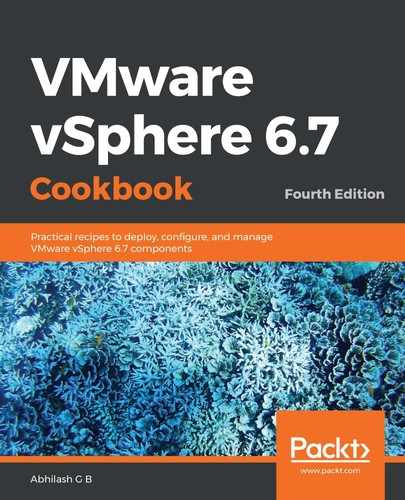The reservation we configured for the virtual machine network on the vDS is a bandwidth reservation per physical NIC (vmnic). The total reservation is equivalent to the total number of physical NICs participating in vDS, multiplied by the bandwidth that's been reserved per NIC.
For instance, 5 Gbps reservation x 6 vmnics = 30 Gbps. There are six vmnics because there are three participating vmnics from two hosts:

Configured Reservation = (Bandwidth Reservation) x (Number of vmnics from each participating ESXi) x (Number of ESXi hosts).
The newly created network resource pool can be mapped to a dvPortGroup. Doing so will ensure that the VMs in the dvPortGroup are guaranteed to receive the reserved bandwidth during contention:

Unlike reservations, shares allocate unreserved bandwidth among contenting traffic types or VMs based on their relative share value. Check out the following instances:
- The default share value of 50 for the vMotion, management, and vSphere replication traffic types.
- The uplinks that are used should have the same bandwidth capacity, which, in this case, is 10 Gbps.
- Since each traffic type has a share value of 50, the cumulative share value is 150.
- During contention, each of the traffic types will get (50/150) x 100 = 33% of the total bandwidth. This is 33% of 30 Gbps, which is approximately 9.9 Gbps for each traffic type.
